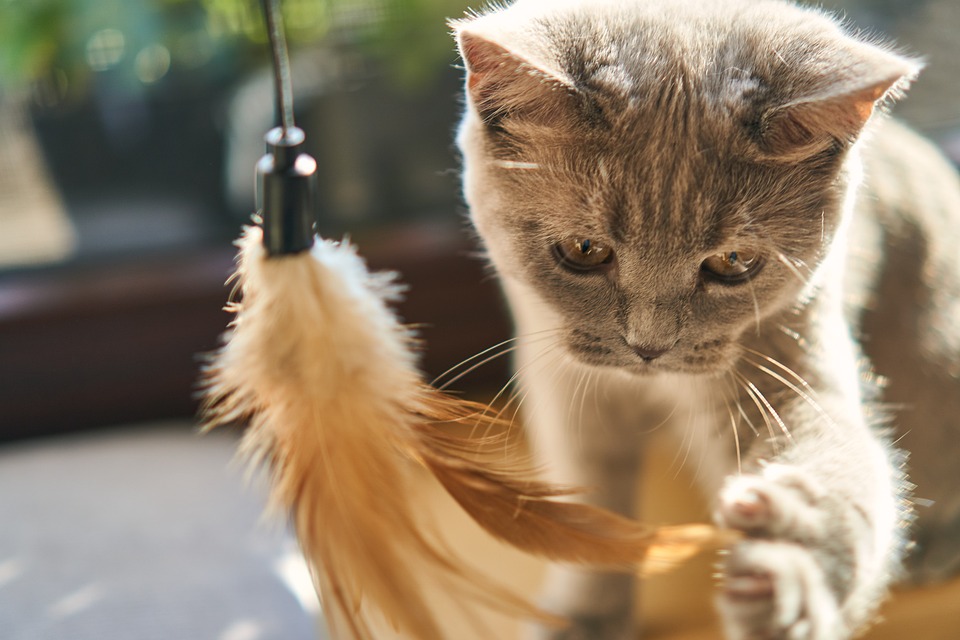Understanding Excessive Vocalization During Play: A Guide to Cat Behavior
Introduction:
Cats are known for their playful nature, and during these play sessions, they may exhibit excessive vocalization. While it can be cute and entertaining, it’s essential to understand the reasons behind this behavior. In this article, we will delve into the various aspects of excessive vocalization during play, providing insights into why cats engage in such behavior and how to manage it effectively.
I. Why do cats vocalize during play?
A. Instinctual behavior
Cats are natural hunters, and during playtime, they may vocalize as a way to imitate hunting sounds or communicate with their prey. This instinctual behavior is deeply ingrained in their DNA.
B. Communication and socialization
Cats are social animals, and vocalization during play can serve as a means of communication with their human or feline playmates. It helps them express their intentions, excitement, or frustration.
C. Frustration or excitement
Excessive vocalization during play can also be a sign of frustration or excitement. Cats may become vocal when they are unable to catch their prey or when they are overly stimulated by the play session.
D. Attention-seeking
Some cats may vocalize excessively during play as a way to get attention from their owners. It can be their way of saying, “Hey, look at me! I’m having fun!”
II. Types of vocalizations during play
A. Chirping and trilling
Chirping and trilling are common vocalizations during play. These soft, high-pitched sounds are often a sign of excitement and anticipation.
B. Meowing and yowling
Meowing and yowling during play can indicate various emotions, such as frustration, excitement, or a desire for interaction. These vocalizations are typically louder and more intense than chirping and trilling.
C. Growling and hissing
Growling and hissing during play can occur when cats become overly stimulated or feel threatened. These vocalizations are a clear indication that the play session needs to be toned down or stopped.
D. Purring
Purring is a unique vocalization that cats may exhibit during play. It’s often a sign of contentment and relaxation, indicating that your cat is enjoying the play session.
III. Recognizing normal vs. excessive vocalization
A. Normal play vocalizations
Normal play vocalizations are short-lived, intermittent, and do not disrupt your cat’s behavior or daily activities. They are a natural part of playtime and should not be a cause for concern.
B. Excessive vocalization signs
Excessive vocalization becomes persistent, intense, and may affect your cat’s well-being or cause disruptions in your household. If your cat’s vocalizations are accompanied by signs of distress or aggression, it’s crucial to assess the situation and seek professional help if needed.
IV. Understanding the underlying reasons for excessive vocalization
A. Overstimulation
Cats can become overstimulated during play, leading to excessive vocalization. It’s important to monitor your cat’s behavior and provide breaks when necessary to prevent overstimulation.
B. Anxiety or fear
Some cats may vocalize excessively during play due to anxiety or fear. This can be triggered by new environments, unfamiliar playmates, or previous negative experiences. Creating a safe and calm environment can help alleviate their anxiety.
C. Pain or discomfort
Excessive vocalization during play can also be a sign of pain or discomfort. It’s important to rule out any underlying health issues by consulting with a veterinarian.
D. Lack of socialization
Cats that have not been adequately socialized may vocalize excessively during play. Ensuring proper socialization from a young age can help prevent this behavior.
V. Managing excessive vocalization during play
A. Provide appropriate outlets for energy
Engage your cat in regular interactive play sessions to provide an appropriate outlet for their energy. This can help reduce excessive vocalization by allowing them to expend their energy in a positive way.
B. Create a stimulating environment
Ensure your cat’s environment is enriched with toys, scratching posts, and hiding places. This can help prevent boredom and reduce the need for excessive vocalization during play.
C. Gradually desensitize your cat
If your cat becomes excessively vocal during play, gradually desensitize them by starting with shorter play sessions and slowly increasing the duration. This can help them become more comfortable and reduce their vocalizations.
D. Seek professional help if necessary
If your cat’s excessive vocalization during play persists or escalates despite your efforts, it’s essential to seek professional help from a veterinarian or an animal behaviorist. They can assess your cat’s behavior and provide guidance specific to your cat’s needs.
VI. Frequently Asked Questions (FAQs)
A. Why does my cat yowl loudly during playtime?
B. Is excessive vocalization during play a cause for concern?
C. How can I differentiate between normal and excessive vocalization?
D. What should I do if my cat’s excessive vocalization becomes problematic?
E. Can excessive vocalization during play be a sign of an underlying health issue?
Conclusion:
Excessive vocalization during play is a common behavior exhibited by cats, but it’s essential to understand the reasons behind it. By recognizing the underlying causes and managing them effectively, you can ensure both you and your feline friend enjoy playtime without any unnecessary concerns. Remember, if you ever have doubts or need assistance, don’t hesitate to seek professional help from a veterinarian or animal behaviorist.








